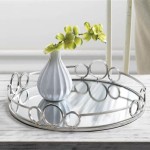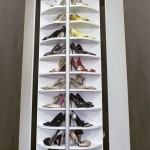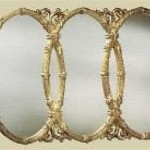Understanding Plain Mirror Glass: Composition, Applications, and Characteristics
Plain mirror glass, a ubiquitous material found in countless applications, is a type of glass specifically manufactured to provide a clear and accurate reflection. Its production involves a carefully controlled process to ensure optical quality and longevity. The material’s seemingly simple appearance belies a sophisticated combination of materials and techniques which contribute to its reflective properties and overall durability.
The foundational element of plain mirror glass is, of course, glass itself. Typically, float glass is used as the substrate. Float glass is manufactured by floating molten glass over a bed of molten tin, resulting in a perfectly flat and smooth surface. This superior surface quality is critical for producing a high-quality mirror as any imperfections in the glass will be magnified in the reflection. The composition of the glass itself generally consists of silica (sand), soda ash (sodium carbonate), and lime (calcium oxide), along with minor components to modify its properties, such as magnesia (magnesium oxide) and alumina (aluminum oxide).
The transformation of float glass into a mirror requires the addition of a reflective coating. This coating is most commonly a thin layer of silver, though aluminum is also used in some applications. Silver offers a superior reflectivity compared to aluminum. The application of the metallic layer is a delicate process, typically involving a chemical deposition method. This process ensures a uniform and consistent coating for optimal reflection. Following the silver layer, one or more protective coatings are applied. These layers are crucial for preventing oxidation and corrosion of the silver, which would otherwise lead to black spots and degradation of the mirror's reflectivity over time. Common protective coatings include copper and paint layers. The copper layer provides an additional barrier against corrosion, while the paint layers serve as a final sealant and provide physical protection against scratches and abrasions.
The quality of plain mirror glass is determined by several factors, including the flatness and smoothness of the glass substrate, the uniformity and reflectivity of the metallic coating, and the effectiveness of the protective layers. High-quality mirrors exhibit minimal distortion and provide a clear, accurate reflection. The durability of the mirror is dependent on the adhesion of the coatings to the glass and the resistance of the protective layers to environmental factors such as humidity and temperature fluctuations.
Optical Properties and Image Quality
The effectiveness of plain mirror glass hinges on its ability to accurately reflect light and produce a clear image. The primary characteristic determining image quality is the reflectivity of the metallic coating. Silver, as mentioned earlier, boasts a high reflectivity across the visible spectrum, making it ideal for mirrors intended for general use. Reflectivity is measured as the percentage of incident light that is reflected. High-quality silvered mirrors can achieve reflectivity values of 95% or higher. This high reflectivity ensures a bright and vivid reflection.
Distortion is another crucial factor affecting image quality. Any warp or unevenness in the glass substrate will cause the reflected image to appear distorted. Float glass inherently minimizes distortion due to its manufacturing process. However, the handling and processing of the glass during the mirroring process must also be carefully controlled to prevent any deformation. Techniques such as stress-relieving annealing can be employed to further minimize internal stresses in the glass, reducing the risk of distortion.
Clarity is also essential for producing a faithful reflection. Impurities or imperfections within the glass can scatter light, reducing the clarity of the reflected image. High-quality float glass is manufactured using carefully selected raw materials and a tightly controlled melting process to minimize these impurities. Furthermore, the surfaces of the glass must be meticulously cleaned before applying the reflective coating to ensure optimal adhesion and prevent the introduction of contaminants that could affect clarity.
Applications Across Industries
The versatility of plain mirror glass makes it an indispensable material in a wide array of industries and applications. Its reflective properties and relatively low cost contribute to its widespread use. From everyday household items to sophisticated scientific instruments, plain mirror glass serves diverse functions.
In residential settings, mirrors are predominantly used for decorative and functional purposes. Bathroom mirrors, dressing mirrors, and wall-mounted mirrors are essential components of most homes. Mirrors can visually expand spaces, enhance lighting, and add aesthetic appeal to interior design. Decorative mirrors often incorporate intricate designs, beveling, or framing to complement the overall decor of a room.
Retail environments heavily rely on mirrors to enhance the customer experience. Clothing stores use mirrors extensively in fitting rooms to allow customers to assess their appearance in different garments. Mirrors are also used strategically throughout stores to create the illusion of more space and to showcase merchandise from multiple angles. Security mirrors are frequently used in retail settings to improve visibility and deter theft.
The automotive industry uses mirrors extensively for safety and driver assistance. Rearview mirrors and side mirrors are crucial for providing drivers with a clear view of their surroundings. These mirrors are typically manufactured with specific curvature and coatings to minimize glare and maximize visibility in various lighting conditions. Advanced driver-assistance systems (ADAS) increasingly incorporate mirrors as part of camera-based systems for features such as blind-spot monitoring and lane departure warning.
Scientific and industrial applications also leverage the reflective properties of plain mirror glass. Telescopes use mirrors to collect and focus light from distant objects. Microscopes employ mirrors to direct light through samples and enhance the visibility of microscopic structures. Lasers often incorporate mirrors to reflect and focus laser beams. In industrial settings, mirrors are used in optical sensors, scanning devices, and quality control systems.
Manufacturing Processes and Quality Control
The manufacturing of plain mirror glass is a complex process that requires precision and attention to detail. Each step, from the selection of raw materials to the final inspection, plays a crucial role in determining the quality and performance of the finished product. Strict quality control measures are implemented throughout the manufacturing process to ensure that the mirrors meet the required standards.
The first step involves the selection of high-quality float glass. The glass is inspected for any defects, such as bubbles, scratches, or inclusions, which could affect the optical properties of the mirror. The glass is then cut to the desired size and shape using automated cutting equipment. The edges of the glass are often ground and polished to remove any sharp edges and improve the appearance of the mirror.
The next step is the application of the reflective coating. The glass is thoroughly cleaned and degreased to ensure optimal adhesion of the metallic layer. The silver coating is typically applied using a chemical deposition process, such as the Stannous Chloride method. This method involves spraying the glass with a solution of stannous chloride, followed by a solution of silver nitrate. The silver nitrate reacts with the stannous chloride to form a thin, uniform layer of silver on the glass surface.
After the silver coating is applied, it is protected with one or more layers of copper and paint. The copper layer is applied using a similar chemical deposition process. The paint layers are applied using spraying or roller coating techniques. The paint is typically a durable, corrosion-resistant material that provides long-term protection for the silver coating. The mirrors are then cured in ovens to ensure that the paint layers are fully hardened and bonded to the glass.
Throughout the manufacturing process, quality control checks are performed at each stage. The thickness and uniformity of the metallic coating are measured using specialized equipment. The reflectivity of the mirror is measured using spectrophotometers. The adhesion of the coatings to the glass is tested using pull-off tests. The mirrors are also visually inspected for any defects, such as scratches, blemishes, or distortion. Mirrors that do not meet the required quality standards are rejected.

Transpa Plain Mirror Glass Size Dimension 12x8 Inches

Why Your Home Should Have High Quality Plain Glass Mirrors Mirrorwalla

Simple Bedroom Frameless Pre Drilled Wall Mounted Plain Mirrors 5mm Thick Glass

2mm 3mm 4mm Plain Mirror Glass Polished Edges China Sheet Made In Com

Plain Glass Mirror For Bathroom Size 15x18 Inch

Rectangular Mirror Frameless Basic Plain Simple Saint Gobain Flair Glass

Princeart 12x12 Inch Wall Decor Plain Mirror Glass For Home Bedroom Living Room Hd55 Bathroom In Buy

2mm 3mm 4mm Plain Mirror Glass Polished Edges China Sheet Made In Com

Transpa Plain Mirror Glass Size Dimension 12x8 Inches

Princeart 12x18 Inch Wall Decor Plain Glass For Home Bedroom Living Room Hd24 Bathroom Mirror In Buy








